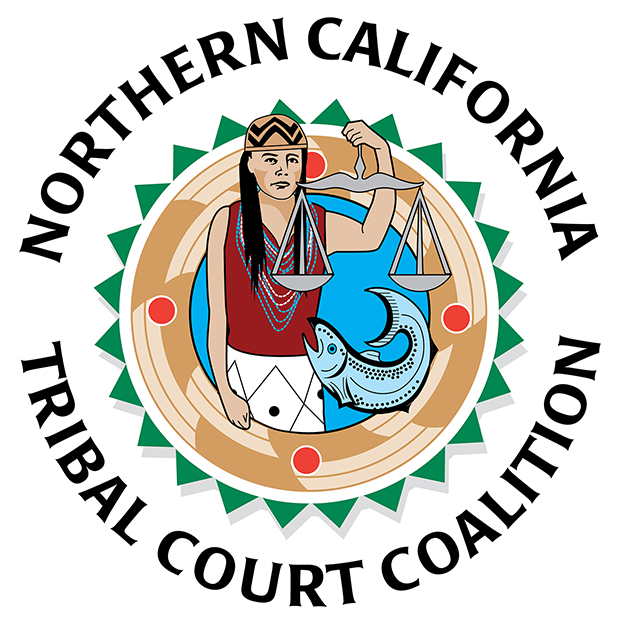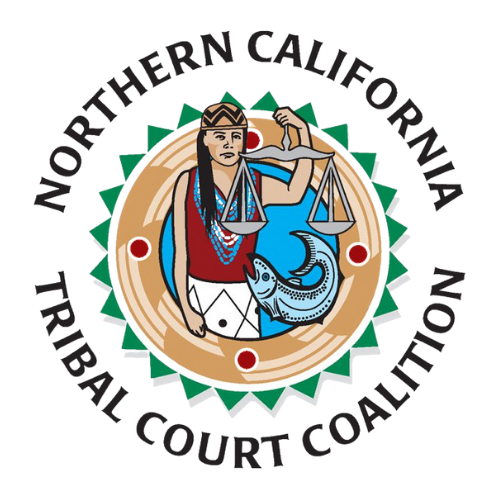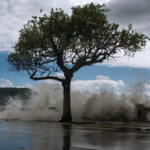
Position announcement
- Published in Above the fold, Employment Opportunities
Northern California Tribal Court Coalition Receives $50000 Award from The Association of Tribal Archives, Libraries, and Museums
Eureka, CA – Northern California Tribal Court Coalition received a $50000 grant through the Association of Tribal Archives, Libraries, and Museums (ATALM) American Rescue Plan: Humanities Grants for Native Institutions. This grant opportunity is intended to help Native Cultural Institutions to recover from the COVID-19 pandemic and provide humanities programming to their communities. Funds were provided by the National Endowment for the Humanities (NEH) as part of the American Rescue Plan Act of 2021 passed by the U.S. Congress.
Funds support the Weaving Wellness: Connecting the Humanities and Healing Project that will support an intertribal project that uses Indigenous humanities content to support healing for victims of domestic violence. Collaborating with Indigenous focus groups, tribal advocates, and victim service providers, NCTCC will identify, collect, and curate a collection of identity-based, cultural wellness materials so that Native victims of violence, their families, and their advocates can access culturally appropriate methods of trauma recovery, healing, and wellness. Tribes are the Bear River Band of the Rohnerville Rancheria; Cher-ae Heights Indian Community of the Trinidad Rancheria; Tolowa Dee-ni’ Nation; Yurok Tribe; Karuk Tribe; and Hoopa Valley Tribe.
“COVID-19 hit Tribal communities particularly hard. The pandemic is not only responsible for the loss of culture keepers, Native language speakers, elders, and government leaders, but also the closure of cultural institutions, furloughed staff, and reduced programming,” said ATALM President Susan Feller. “This opportunity will provide much-needed financial support and create humanities-based programs that bring cultural practitioners and the public together in a dialogue that embraces the civic and cultural life of Native communities.”
Northern California Tribal Court Coalition was selected by an independent Peer Review Committee and is one out of 84 awardees to receive funding. Other awardees representing 25 states include Tribal governments and Native nonprofit organizations, as well as higher education institutions and non-native nonprofit organizations working in partnership with state or federally recognized tribal entities. A total of $3.26 million was granted. A list of grantees is available at www.atalm.org
“The National Endowment for the Humanities is grateful to the Association of Tribal Archives, Libraries, and Museums for the association’s important work in administering American Rescue Plan funding to help Native American cultural institutions recover from the pandemic,” said NEH Chair Shelly C. Lowe (Navajo). “These grants provide valuable humanities resources to tribal communities and represent a lifeline to the many Native heritage sites and cultural centers that are helping preserve and educate about Indigenous history, traditions, and languages.”
###
ABOUT NORTHERN CALIFORNIA TRIBAL COURT COALITION
NCTCC is a collaboration of the Tribal Courts of Bear River Band of Rohnerville Rancheria, Hoopa Valley Tribe, Karuk Tribe, Tolowa Dee-ni’ Nation, Trinidad Rancheria, and Yurok Tribe. NCTCC is a 501(c)(3) organization chartered under the laws of the Hoopa Valley Tribe and the State of California. NCTCC’s mission is to Promote and Strengthen Tribal Justice Systems to Restore Balance and Order in our Communities, While Honoring Sovereignty and Cultural Values.

ABOUT THE NATIONAL ENDOWMENT FOR THE HUMANITIES
Created in 1965 as an independent federal agency, the National Endowment for the Humanities supports research and learning in history, literature, philosophy, and other areas of the humanities by funding selected, peer-reviewed proposals from around the nation. Additional information about the National Endowment for the Humanities and its grant programs is available at: www.neh.gov.

ABOUT THE ASSOCIATION OF TRIBAL ARCHIVES, LIBRARIES, AND MUSEUMS
The Association of Tribal Archives, Libraries, and Museums (ATALM) is an international association dedicated to preserving and advancing the language, history, culture, and lifeways of Indigenous peoples. Founded in 2010, ATALM maintains a network of support for Indigenous cultural programs, provides professional development training, enables collaboration among tribal and non-tribal cultural institutions, and advocates for programs and funding to sustain the cultural sovereignty of Native Nations. To learn more, visit www.atalm.org

- Published in Above the fold
Safety Recommendations During COVID-19 Pandemic
During the COVID-19 pandemic, many households that suffer from heightened amounts of domestic abuse, financial loss, and isolation have been faced with lay-offs, home school, and quarantine measures deepening these areas of household stress. At worst, survivors of domestic violence have been forced into isolation with abusers. Since domestic violence thrives in secrecy, victims of domestic violence must take measures to protect themselves while stay at home orders are in place. The California Victim Compensation Board (Cal VCB) suggests safety measures for survivors of domestic violence.
- Create a Personal Safety Plan
To help to reduce the risk of injury from violence, it can help to be aware of:
- Identify exits.
- Practice your escape plan.
- Establish a sign or safety word to use with friends, family, or trusted network, to alert them to contact law enforcement.
- Teach children how to dial 911.
- Remove weapons from the home or relocating them to hard-to-reach places.
- Position your vehicle to aid with a quick escape if needed, and keep it filled with gas.
- Contact a domestic violence advocate to get help with making a safety plan and accessing necessary resources.
- When contacting an advocate, be cautious about how you contact them. Using a device that an abuser may have access to can jeopardize your safety. Use a prepaid cell phone or a friend’s phone, if possible.
To apply for Victim Compensation
- Create an application using CalVCB Online — a secure and private portal that can be easily accessed from a smartphone, tablet or computer.
- Contact a local county Victim Witness Assistance Center.
- Call the CalVCB Help Line at (800) 777-9229.
- Download an application from CalVCB’s How to Apply page.
- Visit the CalVCB website at https://victims.ca.gov/for-victims/
Additional Resources
- Telehealth services are available for medical, mental health, and education services. CalVCB allows up to 5 telehealth services per application. Service providers can submit an application to increase the number of sessions they can offer.
Did you know that the NCTCC Mobile Application can help you create a Safety Plan on your mobile device? Download the here: https://nctcc.org/nctcc-app/
- Published in Uncategorized
Self Care and Historic Trauma in Victim Services
What is Historical Trauma (HT)?
Historical Trauma is a term conceived by Maria Yellow Horse Braveheart, a Hunkpapa/Oglala Lakota social worker and mental health expert. Initially, Braveheart introduced the term as Indigenous Historical Trauma (IHT) in order to describe an intergenerational trauma passed down from one generation to another due to the impacts of colonization and modern day systemic racism inflicted upon Native American populations. Researchers apply the term to other marginalized populations as well.
How does Historical Trauma manifest in Native American populations?
Historical Trauma Response (HTR) can show up as anxiety, depression, substance abuse, suicide, domestic violence, and other forms of abuse that occur in Tribal communities.
How is Historical Trauma passed down from one generation to the next?
A clear example of intergenerational trauma is parental loss. If a child loses one or both parents at a young age, it is clear to see how the next generation will be affected by the loss of that parent. The manifestation of parental loss may inflict a range of coping strategies in order for that child to interact with society throughout their lifespan. For example, if my mother never learned to tie her shoes, was addicted to a substance, and developed major depressive disorder because of the loss of her mother, my life would also be affected by this loss. I may also not learn how to tie my shoes, I may suffer from neglect, or become interested in substance abuse because of witnessing my mother’s coping strategy. This may, in turn, pass onto my children as well unless I make great strides to seek treatment for HT.
What does colonization have to do with Intergenerational Trauma?
Colonization began when the first non-Native settlers arrived within the “Americas.” This wave of early colonization made an impact upon Tribal communities by spreading disease, stealing land (terra nullius), and destroying the natural balance of the earth. With only a 10% survival rate, Native Americans lost family members and cultural inheritance that impacts their communities today. There is a loss of identity associated with the loss of culture. Culture is key to cultivating a relationship with Mother Earth. Without the relationship with the Mother many people become lost and show signs of Historical Trauma Response. Because of these reasons and more, it is generally agreed within Native American academic circles that colonization is a modern day phenomena that continues to impact Tribal communities.
What are modern day examples of colonization and how is this related to Historical Trauma?
The examples listed in the previous paragraph result in modern day colonization and intergenerational trauma. More recent occurrences of colonization include boarding schools, relocation, reservation boundary diminishment, underrecognized Tribal status, the absence of Native American education in the school system, and lack of federal fiduciary obligations.
Can you give me an example of how to cope when I feel overwhelmed while facing Historical Trauma?
Many times HT forces us to look into the past to recount what has happened to our Ancestors. Sometimes HT forces us to look into the future and it may be easy to become concerned for the future generations and the future of Mother Earth. By focusing on being present, one may call themselves back into their bodies to navigate the process with more clarity.
Here is an exercise to practice being present. Think about something safe you do on a regular basis to soothe yourself. I will use the example of drinking a cup of tea. To call myself back into the present, I focus on sensation. I hold the hot tea cup in my hand and focus on the temperature, the contours of the cup, the smell and taste of the tea. I take a sip and consider how the water feels on my lips, going down my throat and warming my body. This exercise brings me into a focused space with the tea and my body. The exercise can be applied to any safe method of self soothing such as listening to music, taking a shower, eating chocolate, or gardening.
How can I seek treatment for Historical Trauma?
Repairing the cultural relationship in one’s self and within the affected Tribal community is key. This includes taking action to connect with one’s Tribal culture, value system, beliefs, cultural restoration, and repairing self-image. There are many ways to do this.
- Go for a walk outdoors and listen to the sounds of nature.
- Explore traditional foods.
- Consider participating in Ceremony.
- Go to a cultural event.
- Talk with an elder.
- Learn your Tribal Creation Story.
- Learn your language.
- Volunteer with your Tribe.
- Consider talking to a trusted spiritual person or medicine person.
- Seek services such as counseling or coaching.
- Take a Native American Studies course.
- Meditate, practice being present.
Can my Ancestors help?
Absolutely! Learning about family lineage and family traditions can be very rewarding knowledge to have. There can also be trauma in more recent familial generations. One way that I like to connect with Ancestors is through ceremony and prayer. Sometimes if I am still, I can feel the power of my Ancestors standing beside me. It is important to remember that Ancestors also pass down inherited love, strength, and wisdom. You are the manifested dream of the future generation.
- Published in Uncategorized



